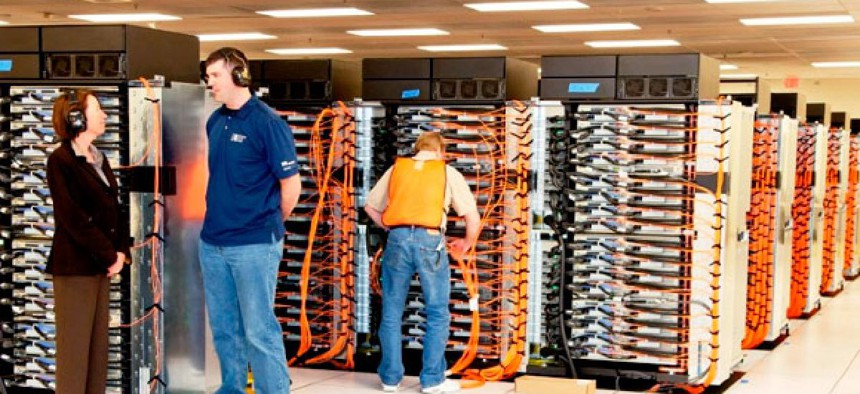Supercomputer Now Focused on Classified Nuclear Deterrence

The Sequoia supercomputer National Nuclear Security Administration
California-based Sequoia also ranks No. 1 in the world at solving big data problems.
The Energy Department has dedicated a new supercomputer to monitoring the health of the nation's atomic arsenal, officials for the U.S. nuclear program announced this week.
The National Nuclear Security Administration successfully shifted one-year-old “Sequoia” from operating unclassified trial simulations to running classified replications of nuclear blasts.
The IBM-built supercomputer, one of the most energy-efficient on earth, placed first on the industry's Top 500 list of the world’s most powerful machines last summer. In November 2012, Sequoia fell to second place, but ranked best in the world at solving "big data" problems involving intensive information analysis.
"These capabilities provide confidence in the U.S. deterrent as it is reduced under treaty agreements,” said Chris Deeney, the agency’s assistant deputy administrator for stockpile stewardship, in a statement. The United States in 1992 stopped blowing up materials underground to test weapons performance and now only runs digital simulations of explosions.
The Obama administration’s attitude toward deterrence is shifting amid rising tensions with aspiring nuclear powers. As recently as December 2012, on the 20th anniversary of a disarmament agreement with the former Soviet Union, Obama pushed to “strengthen the global nonproliferation regime.”
But, in February, with North Korea threatening to shoot missiles at South Korea, Obama "unequivocally reaffirmed" that the United States “remains steadfast” in its commitment to providing the Asian democracy with the “extended deterrence offered by the U.S. nuclear umbrella,” administration officials said.
The California-based Sequoia will perform "uncertainty quantification" calculations to pinpoint the degree of confidence in each prediction of weapons behavior, according to Energy.
"Sequoia’s mammoth computing power" -- reaching 20 petaflop/s, or a quadrillion operations per second -- will provide a more complete understanding of the properties of materials at extreme pressures and temperatures, Deeney said.






